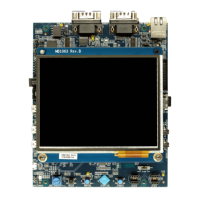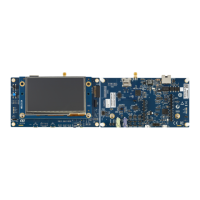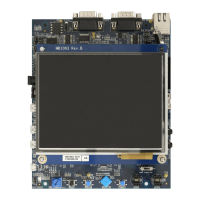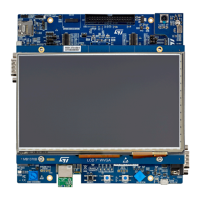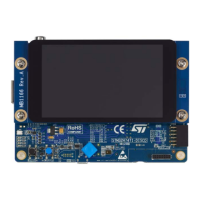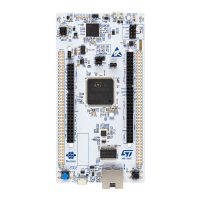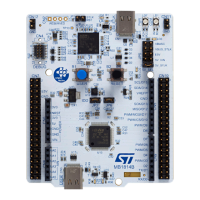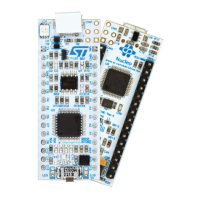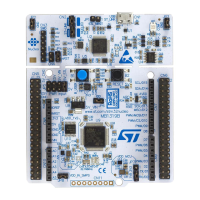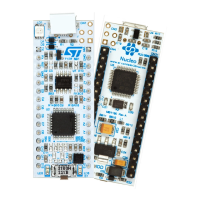• 5 V DC power with 500 mA limitation from CN18, the USB OTG2_FS Micro-AB connector (USB 5V power
source on silkscreen of JP10 (FS2)).
• 5 V DC power with 500 mA limitation from CN16, the USB OTG1_FS Micro-AB connector (USB 5V power
source on silkscreen of JP10 (FS1)).
• 5 V DC power from CN6 and CN7, the extension connectors for daughterboard (daughterboard power
source on silkscreen of JP10 (D5V)).
The STM32H7x7I-EVAL Evaluation board can be powered from the STLINK-V3E USB connector CN23 (U5V),
but only the ST-LINK/V2-1 circuit has the power before USB enumeration, because the host PC only provides
100 mA to the board at that time. During the USB enumeration phase the STM32H7x7I-EVAL board requires
300 mA power from the host PC. If the host is able to provide the required power, the enumeration succeeds, the
power transistor U19 is switched ON, the green LED LD9 is turned ON, and thus the STM32H7x7I-EVAL board is
powered and can consume maximum 300 mA current. If the host PC is not able to provide the requested current,
the enumeration fails. Therefore the STM32 part including the extension board is not powered. As a consequence
the green LED LD9 remains turned OFF. In this case it is mandatory to use an external power supply to supply
extra power.
E5V (from PSU) or D5V can be used as an external power supply in case the current consumption of the
STM32H7x7I-EVAL board exceeds the allowed current on USB. In this condition it is still possible to use USB for
communication, programming or debugging only, but it is mandatory to power the board first using E5V or D5V,
and then connecting the USB cable to the PC. Proceeding this way ensures that the enumeration succeeds
thanks to the external power source.
The following power sequence procedure must be respected:
1. Connect jumper JP10 for PSU or D5V side
2. Check that SB35 is removed
3. Connect the external power source to PSU or D5V (daughterboard mounted)
4. Check green LED LD9 is turned ON
5. Connect the PC to USB connector CN23
If this order is not respected, the board may be powered by V
BUS
first then by E5V or D5V, and the following risks
may be encountered:
1. If more than 300 mA current is needed by the board, the PC may be damaged or current can be limited by
PC. As a consequence the board is not powered correctly.
2. 300 mA is requested at the enumeration phase (since JP15 must be OFF), so there is risk that the request is
rejected and the enumeration does not succeed if PC cannot provide such current. Consequently the board
is not powered (LED LD9 remains OFF).
Note: In case the STM32H7x7I-EVAL board is powered by a USB charger, there is no USB enumeration, so the led
LD9 remains set to OFF permanently and the board is not powered. Only in this specific case the jumper JP15
needs to be set to ON, to allow the board to be powered anyway.
The power supply is configured by setting the related jumpers JP9, JP10 and JP11 as described in Table 5.
Table 5. Power related jumpers
Jumper
Description
JP9
JP9 is used to measure STM32 current consumption manually by a multimeter.
Default setting: ON
UM2525
Power supply
UM2525 - Rev 3
page 11/69
